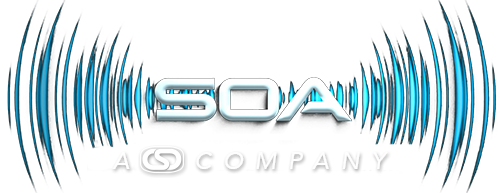EQ and Feeding the Audio Meat Grinder
 I know for most of you, this will seem like a “no brainer.” Unfortunately, there are a lot of twenty-somethings out there who, believe it or not, have never learned the basics of the audio chain. This is for them. In the meantime, here is something for you to chew on. One of the smartest men who has ever lived in this industry said to a group of us once: “There is no such thing as frequency. There is only time. Fourier did us no favors in understanding audio.” Wrap your head around that for a while and let me know what you come up with.
I know for most of you, this will seem like a “no brainer.” Unfortunately, there are a lot of twenty-somethings out there who, believe it or not, have never learned the basics of the audio chain. This is for them. In the meantime, here is something for you to chew on. One of the smartest men who has ever lived in this industry said to a group of us once: “There is no such thing as frequency. There is only time. Fourier did us no favors in understanding audio.” Wrap your head around that for a while and let me know what you come up with.
This subject is where the men are separated from the boys. Ok, also the women from the girls for those who will send me politically correct emails about old sayings. EQ in the audio stream is the most misused and destructive part of the chain. FOH EQ was never meant for correcting inherently bad speakers, speaker designs or even rooms with bad acoustics. It is simply there to adjust the direct energy from the system that cannot be corrected any other way. It is a last resort and must be used very sparingly in order keep the integrity of source. If you saw what an EQ actually does and the destruction that it causes, you would use it only when absolutely necessary and only on your inputs. Now, there are different types: 31 band graphic, parametric, low pass filters, high pass filters, etc. and we are not going to discuss any of them. Just remember one thing. The narrower the band and the more drastic you get with it, the more destruction it will cause. I don’t care if it’s cut or boost, the result is still the same. Hence,“less is more”.
Ok, then where does EQ start? Even though EQ starts at the source, we will start backwards. We have to start at the speaker end.
Choosing the right speaker is the first EQ building block in the reverse chain. If you have a speaker system that is a meat grinder of anything you put into it, it doesn’t matter what you feed it. EQ-ing an unbalanced, nonlinear system will just give the grinder more teeth for which to chew. There is a tendency when upgrading a sound system to want to change the console first and think this will make a difference. Trust me. Meat grinders don’t care what goes into them when they are chewing things up.
First things first, being very careful to get the energy in the right area and keeping it off where it doesn’t belong is the key to evenly distributed energy and your first EQ. Now, one step further. This must also be accomplished with as much true linearity as possible. If we start adding variables along the way it will all add up to be a huge mess that will be compensated with EQ, which will make matters worse. Rule number one: Do not get in the way of an already linear system. Once you have the speaker system correct, we can step back through the chain. By speaker system I mean everything including what powers it.
 Now, you can look at consoles. They are getting very cheap these days and there are many good ones. I think the hardest part might be choosing a drive format. Analog? Digital formats like AES, MADI, DANTE?. All have their functions and uses. I myself am an old analog guy. If the design permits, that is where I start.
Now, you can look at consoles. They are getting very cheap these days and there are many good ones. I think the hardest part might be choosing a drive format. Analog? Digital formats like AES, MADI, DANTE?. All have their functions and uses. I myself am an old analog guy. If the design permits, that is where I start.
Now the heart of the chain is really the microphone. Matching the microphone to the source is your first real EQ. Microphones are not created equal for a reason. There are different types for different applications. Once you have found the microphone you need, it is time to actually look at the source. Whether it is a guitar, a bass, a drum kit or any other input, you should not try to change the inherent properties of that signal. I used to get this question from drummers all the time. “Hey can you make my drums sound awesome?” My reply? Sure just give me your drum key and fifteen minutes and I’ll have you all set. As a FOH guy your job is to accurately represent the source material. It is not to create it.
If all these steps are done correctly there is very little need for input EQ. Just a gentle shaping of each instrument should do it. If you have a good balanced linear audio system there will be absolutely no need for any outboard EQ whatsoever. Everything can be done on the inputs.
Remember, the worst thing you can do to a source is EQ it.
Article Source: Fiber Flex – Link
